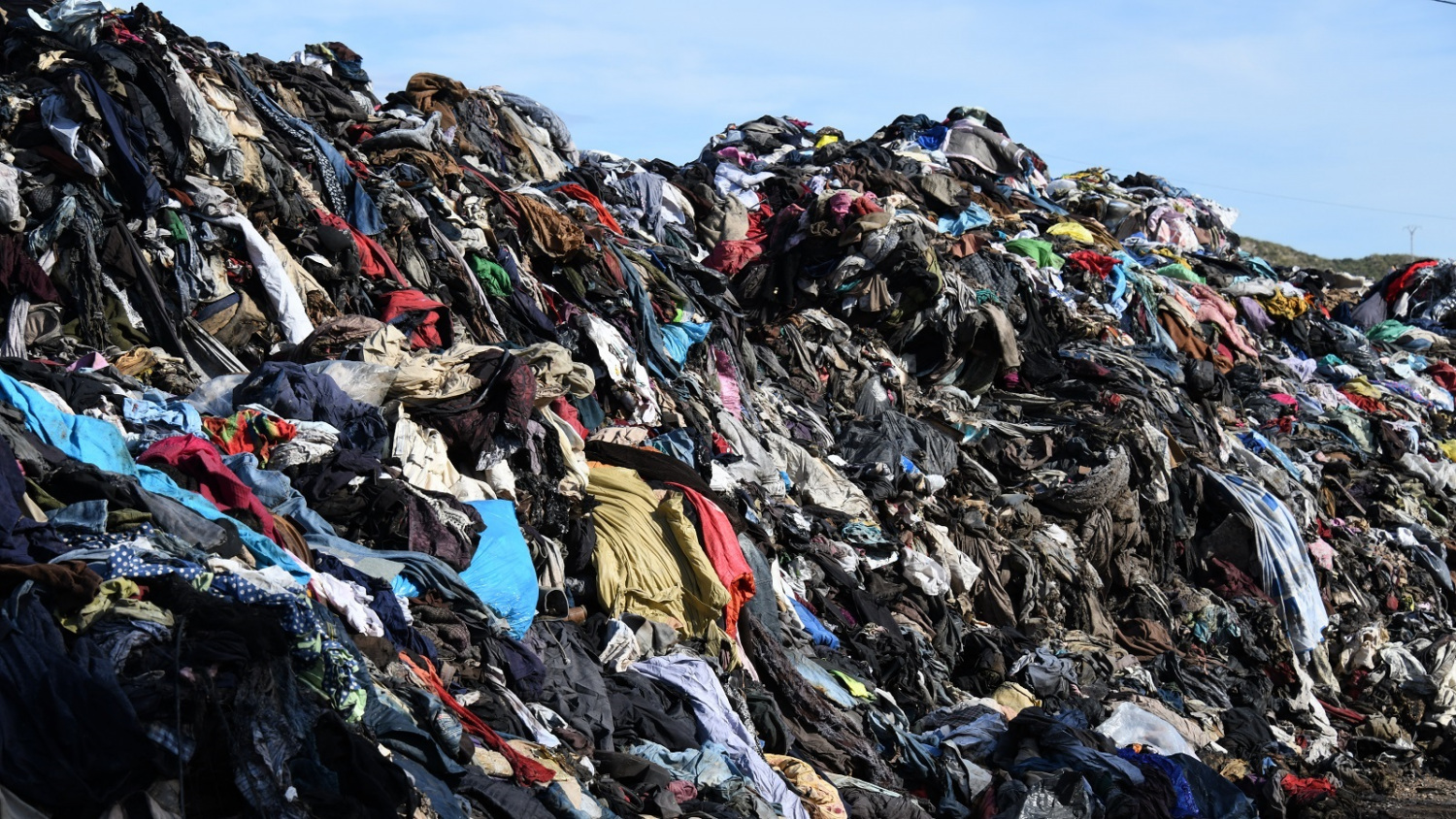
Forever 21: Waste is out of fashion
The fast fashion industry has expanded alongside the increase in use of synthetic clothing– and it's coming at a high cost to the environment.
Sign the petition
It’s hard to imagine a world without our sweat-wicking activewear or your favorite summer swimsuit. These are both made of synthetic fibers, which 60% of our clothing is now made from. But these synthetic fibers, like nylon and spandex, are still relatively new to the textile industry.
People used to rely entirely on natural fibers for clothing and other textiles. In recent decades, synthetic fibers have become much more common, due in large part to cheap manufacturing costs. Clothing made from synthetic fibers also has properties that a lot of consumers are looking for, including their ability to be more water and stain resistant than natural fibers.
The fast fashion industry has expanded alongside the increase in use of synthetic clothing– and it’s coming at a high cost to the environment.
How high?
One synthetic t-shirt alone…
What makes this all the more outrageous is that of the 100 billion items of clothing made each year, it’s estimated that up to 30% are never worn, and likely end up burned or buried in a landfill.
How can all of that be true? Let’s dive into the details.
So, how are synthetic fibers actually produced? They come from fossil fuels, which are known to have a significant impact on global warming as they release greenhouse gasses into the atmosphere.
Polyester, which is a cheaper and thinner alternative to cotton, has become the most commonly used fiber in textiles. Conventional polyester is made from fossil fuel-based resources, like petrochemicals, which use crude oil as the primary raw material. It’s shocking to think that we need 342 million barrels of oil in order to manufacture synthetic fibers every year.
Synthetic clothing also continues to impact the environment when it’s in our homes. We don’t usually think about the water that our washing machine uses when we run a load of laundry, but it happens to be a large source of microplastic pollution.
If you wash a polyester shirt every two weeks, it will release roughly 1 million microplastic fibers into the water every year. These microplastic fibers will eventually make their way into our oceans.
But microplastic fibers don’t just stem from your washing machine. Synthetic clothing sheds microplastics throughout every stage of its life. In fact, researchers estimate that 35% of microplastic pollution in our oceans comes from synthetic clothing. Between 2015 and 2050, clothing production and use could spew up to 22 million metric tons of microplastics into the ocean.
At some point, your synthetic tee shirt will have to be disposed of in some way. Synthetic fibers are cheaper to make, but they are also not as durable as natural fibers. This means that a synthetic shirt is likely to have a shorter lifespan than a cotton shirt.
Most often, clothing will end up in the landfill or sent to an incinerator. Globally, only 20% of all textiles are recycled or repurposed. The 92 million tons of clothing that are disposed of in landfills each year release methane, a potent greenhouse gas. Incinerating clothing releases carbon dioxide and other greenhouse gasses, all of which contribute to air pollution and global warming. When synthetic clothing is burned, microplastic fibers are also released into the air.
This is the likely fate of clothing that consumers dispose of, but what’s worse is that it also happens to clothing that has never been sold. Clothing companies are making more clothing than we can wear. The fashion industry produces over 100 billion new garments every year. This number has doubled since the year 2000 and is only expected to rise. Shockingly, 30% of all the clothing produced globally each year is never sold or worn and is likely headed to the nearest landfill or incinerator. This creates a massive waste problem which fast fashion companies are only accelerating.
Since they churn out thousands of cheap, synthetic clothing items so quickly, fast fashion companies end up sending a lot of their overstock to be thrown away or burned in order to make room for the next batch of clothing.
First and foremost, fast fashion companies need to reduce their environmental impact by changing their practices. We as consumers need to show them that we value sustainability in our fashion or they will keep prioritizing profits over the planet.
Sign our petition calling on Forever 21 to publicly commit to stop trashing and burning their overstock.
Sign our petition calling on Forever 21 CEO Winnie Park to commit the company to not trashing or burning new, unsold clothing.
Sign the petition
We also have a lot of power in our buying choices. So here are a few ways you can lessen your environmental footprint in the clothing department:
As the Zero Waste Campaign Associate with WashPIRG, Kathryn is working on our Waste is Out of Fashion campaign. Kathryn lives near her family in Seattle where she enjoys exploring the beautiful Pacific Northwest through skiing, kayaking and practicing her photography.
